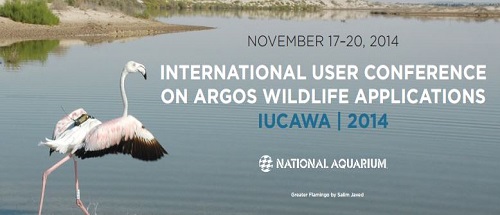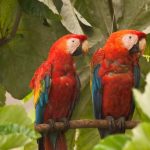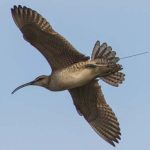← Back
The second day of the IUCAWA 2014

The second day focused on using Argos to understand protected habitats and species and included the work of scientists and naturalists in the United States, the United Kingdom, Canada, Bulgaria, Peru and Brazil. These scientists are working with endangered or vulnerable species, such as blue whales, great white sharks, bluefin tuna, basking sharks, Red-Breasted geese, leatherback turtles and North Pacific Right Whales. Their outstanding work with the Argos system is a key component of species management and conversation.
The afternoon featured a panel discussion on how to communicate results with Argos to the general public, a success story on the conservation and policy applications of the Argos system, as well as splinter sessions on advances in Argos wildlife tracking data management tools. From offshore wind farms, to oil & gas pipelines, to shipping lanes, the Argos system emerges as a crucial source of data allowing scientists to help inform management decisions to prevent civil engineering projects from encroaching on the key habitat areas of marine animals.
Highlights
Helen Bailey, Research Assistant Professor at the Chesapeake Biological Laboratory, University of Maryland Center for Environmental Science and her partners, used Argos tracking data from over 100 endangered blue whales and combined it with environmental data to create a habitat model used to recommend seasonal whale-friendly routes off the coast of California to the shipping industry.
Amy Kennedy, of the National Marine Mammal Laboratory, reported on how Argos tracking data of the North Pacific Right Whale prevented oil & gas lease plots off the coast of Alaska, close to the preferred habitat of the last few remaining North Pacific Right Whales.
Protected Species – Youtube NOAA Fisheries:
Dr. Matt Witt and his colleagues at Marine Sea Turtle Research Group have mapped leatherback turtle hotspots using twelve years of Argos data, and matched them up with a fishing pressure index map (which they compiled using ICCAT Fishing effort measurements) to identify nine areas where high density fishing occurs in leatherback turtle hotspots. This map will be used to lobby for Marine Protected Areas.
BOEM has funded a massive research project to collect data on sea duck movements. This data will be used to inform decisions about where to build offshore wind farms off the Mid-Atlantic United States. As Jim Woehr (BOEM) and his colleagues Alicia Berlin (USGS), Iain Stenhouse (Biodiversity Research Institute), and Bill Montevecchi (Memorial University of Newfoundland) explain, the sight-planning phase is critical because once the windfarms are built, it will be nearly impossible to observe interactions between the turbines and seabirds. Argos tracking provides a good indication of which areas to avoid to best respect the seabirds’ natural habitats.
Richard Merrick, Chief Science Advisor and Director of Scientific Programs, NOAA Fisheries, spoke about the integrated ocean observing system currently being compiled to pull together all of the data sets that scientists gather on the ocean, and include an Animal Telemetry Network (ATN). He encouraged scientists from academia and other sectors to collaborate by providing data.
“Argos satellite telemetry has some really great applications – one of which is conservation.”
Richard Merrick, Chief Science Advisor and Director of Scientific Programs, NOAA Fisheries
“Argos satellite-linked telemetry is an important tool for monitoring large-scale movement s of most marine species.”
Richard Merrick, Chief Science Advisor and Director of Scientific Programs, NOAA Fisheries
“The power of Argos: We have been able to pull together a really large dataset of 12 years, 11 partners…”
Matt Witt, Marine Sea Turtle Research Group
“IUCAWA is a wonderful opportunity for us to exchange ideas. It is not often that I get to hang out with bird people and marine mammal people to share ideas, so this is a really great opportunity.”
Dr. Gregory Skomal, Senior fisheries biologist with Massachusetts Marine Fisheries
“In the U.S. Gulf of Mexico, the U.S. government is now modifying fishing regulations dynamically in order to better protect bluefin”.
Barbara Block, Stanford Univesrity
Useful links:


![a whale and the boat used to equip it, taken during a campaign in 1990 (C. Moriaz) (from [Viale et al., 2019])](https://www.argos-system.org/wp-content/uploads/2022/02/whale-1-150x150.jpg)
